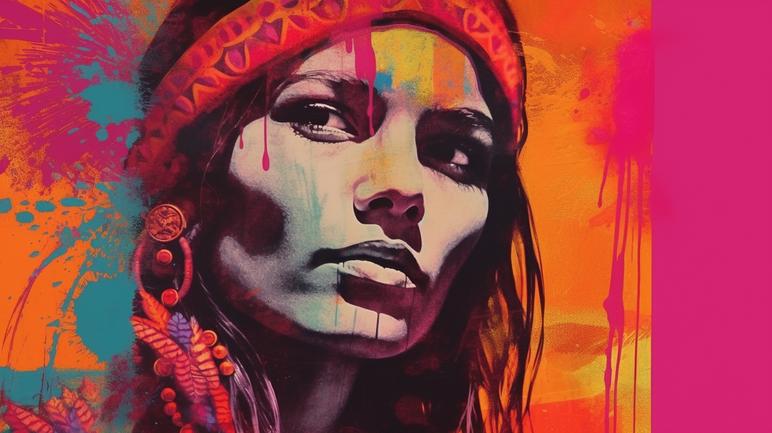The Fashion of Civil Rights Movements

Iconic Styles That Made A Statement
Behold the Civil Rights Movement, an era of American history marked by turbulence, triumph and, let's not forget, trendsetting fashion. It's a veritable cornucopia of styles, each one more iconic than the last. The 1960s, in particular, saw a surge in sartorial symbolism as activists utilized their ensembles to not only express themselves but also further their cause. Let us stroll down memory lane, or catwalk if you will, and survey the most emblematic looks that defined this critical time in history.Black Panthers: Revolutionaries with a Uniform
Before Marvel's Wakanda, there was the Black Panther Party. Founded in 1966, this revolutionary organization sought to protect the Black community from police brutality and promote social change. Their uniform? Impeccable black leather jackets, turtlenecks, and berets to complete the look. But make no mistake, these weren't just fashion statements; they were a calculated ensemble designed to instill a sense of unity and power among the organization's members. Dare I say, they looked fierce while fighting for justice.The Mod Movement: Sharp Threads for an Evolving Society
Originating from London in the 1960s, the mod movement was a celebration of consumerism, affluence, and youth culture. And when it came to fashion, the mods were as sharp as a tack. Tailored suits, slim ties, and dapper accessories all played a part in the mod look, which was heavily influenced by the Italian and French fashion scenes. This style was a sign of the times, as young people began to assert their independence and demand change. It's no wonder that this snappy style remains cherished among fashion connoisseurs.Freedom Riders: A Journey in Denim
Embarking on a journey to challenge segregation and racial inequality in the Deep South, the Freedom Riders of the early 1960s dressed in practical yet powerful attire. Denim jeans and jackets were the go-to choice for these brave souls, symbolizing both durability and defiance. These garments were no stranger to hard work, and neither were the individuals who donned them. As the Freedom Riders traveled on buses to spread their message, their sturdy denim was a silent testament to their unwavering resolve.Hippies: Embodying Peace Through Patterns
When one thinks of the Civil Rights Movement, the groovy style of the hippies is not far behind. Fueled by a desire for peace, love, and harmony, the counterculture movement known as the hippies (or flower children) was defined by their colorful, psychedelic wardrobe. Flowing dresses, vibrant patterns, and bohemian accessories were a staple for the hippie look. It was a direct rejection of the conservative, buttoned-up styles of the previous generation, and a symbol of the undeniable cultural shift taking place during this time. So boldly did they bear their embroidered hearts on paisley-print sleeves.- Bonus tip: To truly channel your inner hippie, don't forget to adorn yourself with a flower crown. Peace, man.
Martin Luther King Jr.: The Suit of Change
Civil rights leader Dr. Martin Luther King Jr. personified the power of a well-dressed activist. His choice of attire - crisp, tailored suits - conveyed an air of respectability and authority, which helped amplify his message and garner support for his cause. The suit became a symbol of the movement itself, a reminder that the fight for equality was not just a struggle by the people, but for the people. Elegance, thy name is Martin.The Dashiki: A Pan-African Fashion Statement
Originating from West Africa, the dashiki is a colorful, loose-fitting garment that gained popularity in the United States during the Civil Rights Movement. Worn by both men and women, the dashiki was embraced as a symbol of black pride and cultural identity. The vibrant patterns and colors of the dashiki represented the rich history of Africa, and its wearer's commitment to the cause. In a world of black and white, the dashiki was a rainbow of resistance.Wrapping It Up
The fashion of the Civil Rights Movement was as diverse and multifaceted as the people who fought for change. From powerful uniforms to vibrant patterns, the clothing worn by activists of the time served as a visual representation of their commitment to justice and equality. In the words of the iconic Coco Chanel, "Fashion is not something that exists in dresses only. Fashion is in the sky, in the street, fashion has to do with ideas, the way we live, what is happening." And oh, how right she was.Article kindly provided by foreverinfashion.org
Latest Articles
- Style That Works With Your Body, Not Against It
- Fashion Tourism on Wheels: Curated Shopping Routes Led by Chauffeur Guides
- The Charm of Certainty in a World of Indecision
- Can an Everyday T-Shirt Be Turned into a Modern Heirloom?
- Color, Ceremony, and the Psychology of Celebration
- Styling Graphic T-Shirts for Different Body Types
- Getting Kids to Wear Their Hats Without a Bribe or a Meltdown
- Mastering the Art of Being the Unnoticed Photographer
- Quiet Sportswear Moves Loudly
- Fashion's Most Misunderstood Color Is Brown
- Weight Matters When Cotton Gets Real
- SKU's Out for Summer: Why Your Warehouse Is Melting Down
- Ink as Accessory - How Tattoos Are Replacing Jewelry in Modern Style
- Decoding the Y2K Aesthetic with Style and Sanity
- Accessories
- Jewellery
- Footwear
- Skirts and Dresses
- Shirts and Blouses
- Beauty and Makeup
- Fashion Photography
- Sustainable Fashion
- Street Style
- Fashion History
- Fashion Business
- Fashion Styling
- Fashion Events
- Plus-Size Fashion
- Men's Fashion
- Women's Fashion
- Fashion Blogging
- Fashion Trends
- Fashion Retailers
- Fashion Tips and Advice
- Fashion Business Startups
- Fashion Around the World
- Lingerie
- Sportswear
- Weddings

